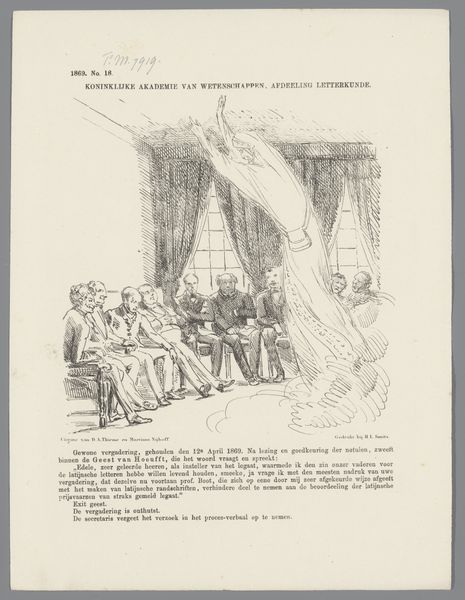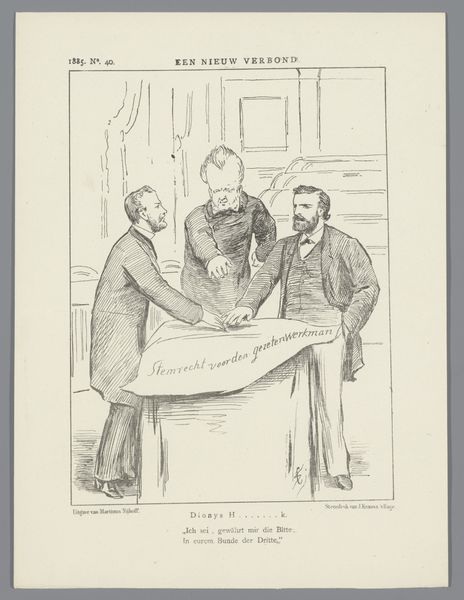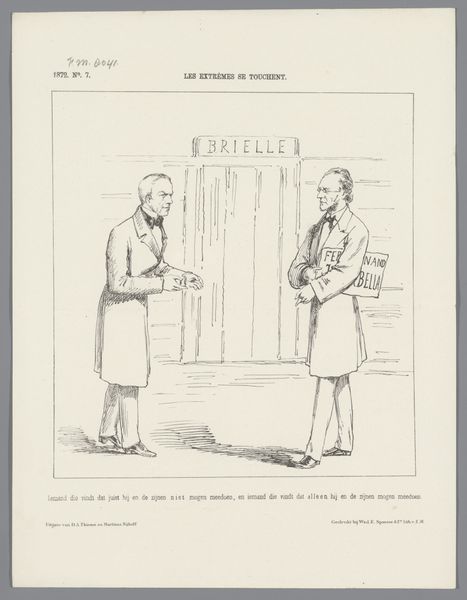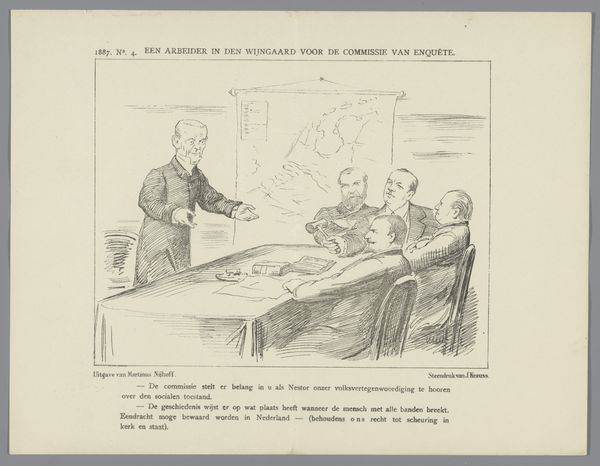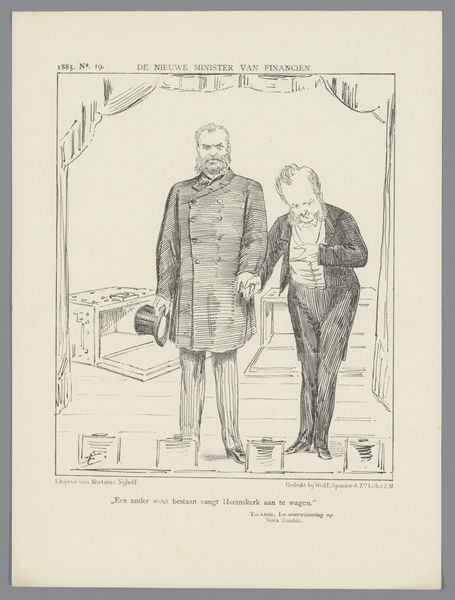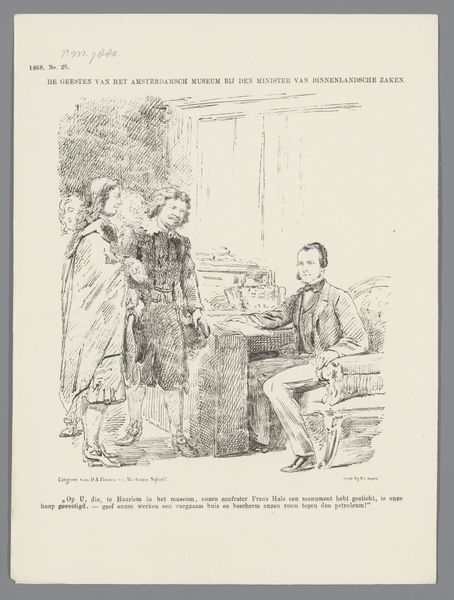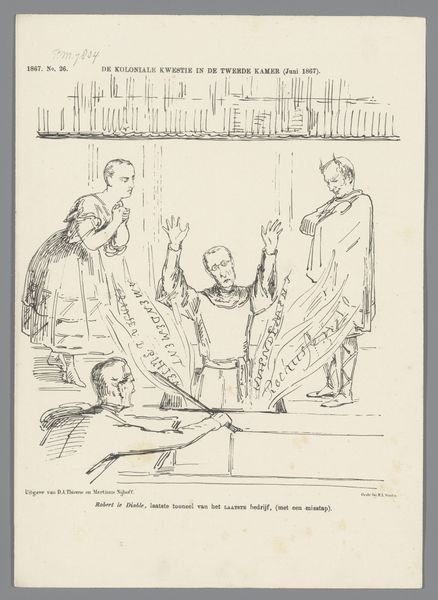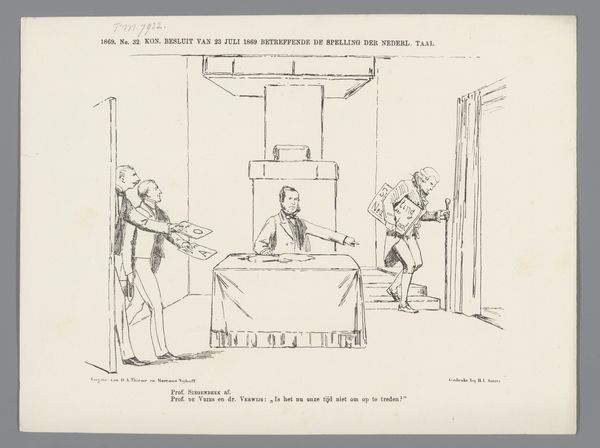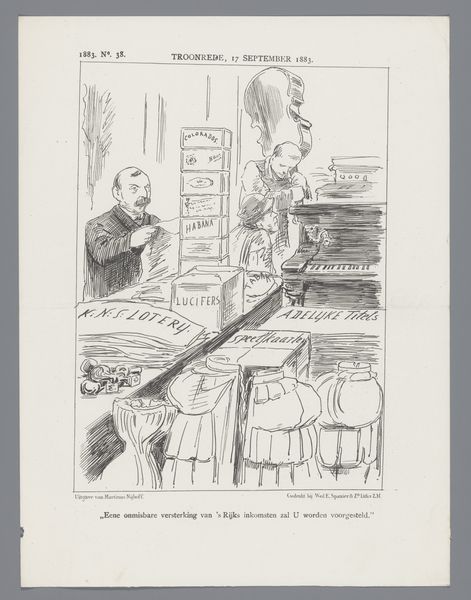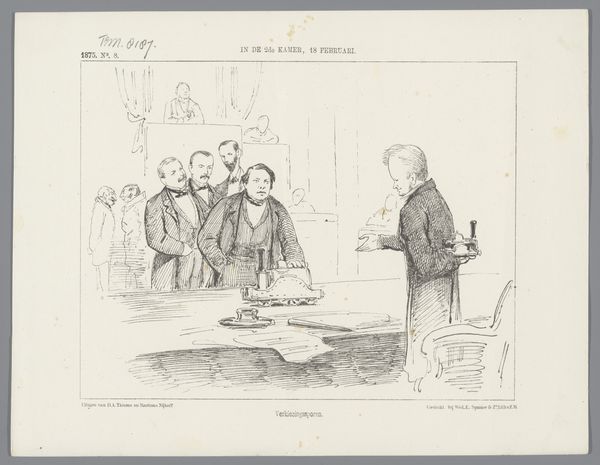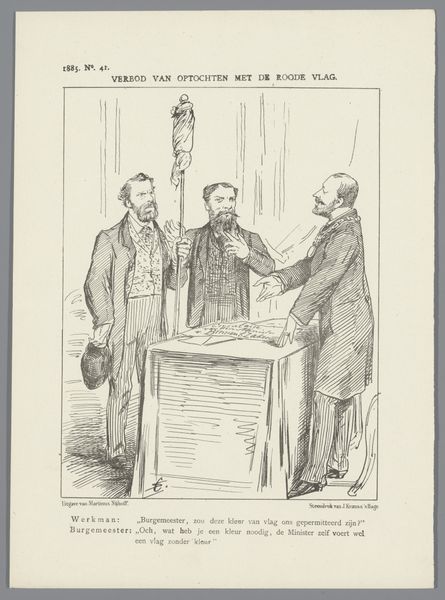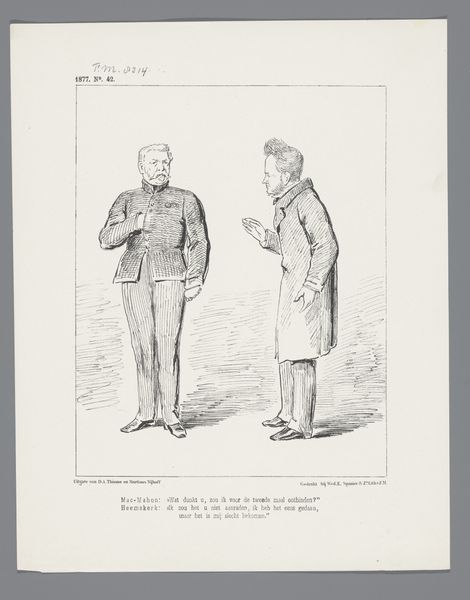
drawing, print, etching
#
portrait
#
drawing
#
comic strip sketch
#
aged paper
#
narrative-art
# print
#
etching
#
caricature
#
old engraving style
#
sketch book
#
figuration
#
personal sketchbook
#
idea generation sketch
#
sketchwork
#
line
#
sketchbook drawing
#
genre-painting
#
history-painting
#
storyboard and sketchbook work
#
academic-art
#
sketchbook art
#
modernism
#
realism
Dimensions: height 275 mm, width 215 mm
Copyright: Rijks Museum: Open Domain
Curator: This caricature from 1872 by Johan Michael Schmidt Crans, a print and etching titled 'Spotprent op de ministers Van Limburg Stirum en Brocx,' is fascinating. What grabs your attention? Editor: Well, the first thing I noticed is that it is made from simple line etchings. The subjects seem to be sitting around a table, and one of them is building something that looks like a house of cards using what seem to be books. I’m curious how this speaks to the ministers mentioned in the title. Curator: Notice how the etching technique itself allows for mass production and distribution. Caricatures like these were vital tools for shaping public opinion and critiquing the political structures of the time. The fact that they used readily available, inexpensive materials made these images easily disseminated, what might be a purpose? Editor: Ah, I see! The medium allowed it to reach a wider audience, making the political critique more impactful, almost democratic in its accessibility. It’s like today’s memes but printed and circulated instead of being digital. What can we infer about the house of cards the man is building, from that same production angle? Curator: The books as cards! Their flimsiness highlights a perceived instability within the ministries. Considering that printmaking involved specific skills and tools, the artist, and therefore the people who supported his art were attempting to call attention to perceived weaknesses in the prevailing political system by exploiting the means of that systems communication itself. The artist isn't merely depicting a scene but engaging in a dialogue about labor, social critique, and the material culture of 19th-century politics. Editor: So the cheap, reproducible material actually strengthens the artist's critique! I wouldn't have thought of that without considering the medium's socio-political environment. It's interesting to see how materials and processes connect to political commentary. Curator: Exactly. By looking at the printmaking process and distribution methods, we gain a richer understanding of the work's intention and impact. Hopefully, you understand a new lens on artwork today.
Comments
No comments
Be the first to comment and join the conversation on the ultimate creative platform.
